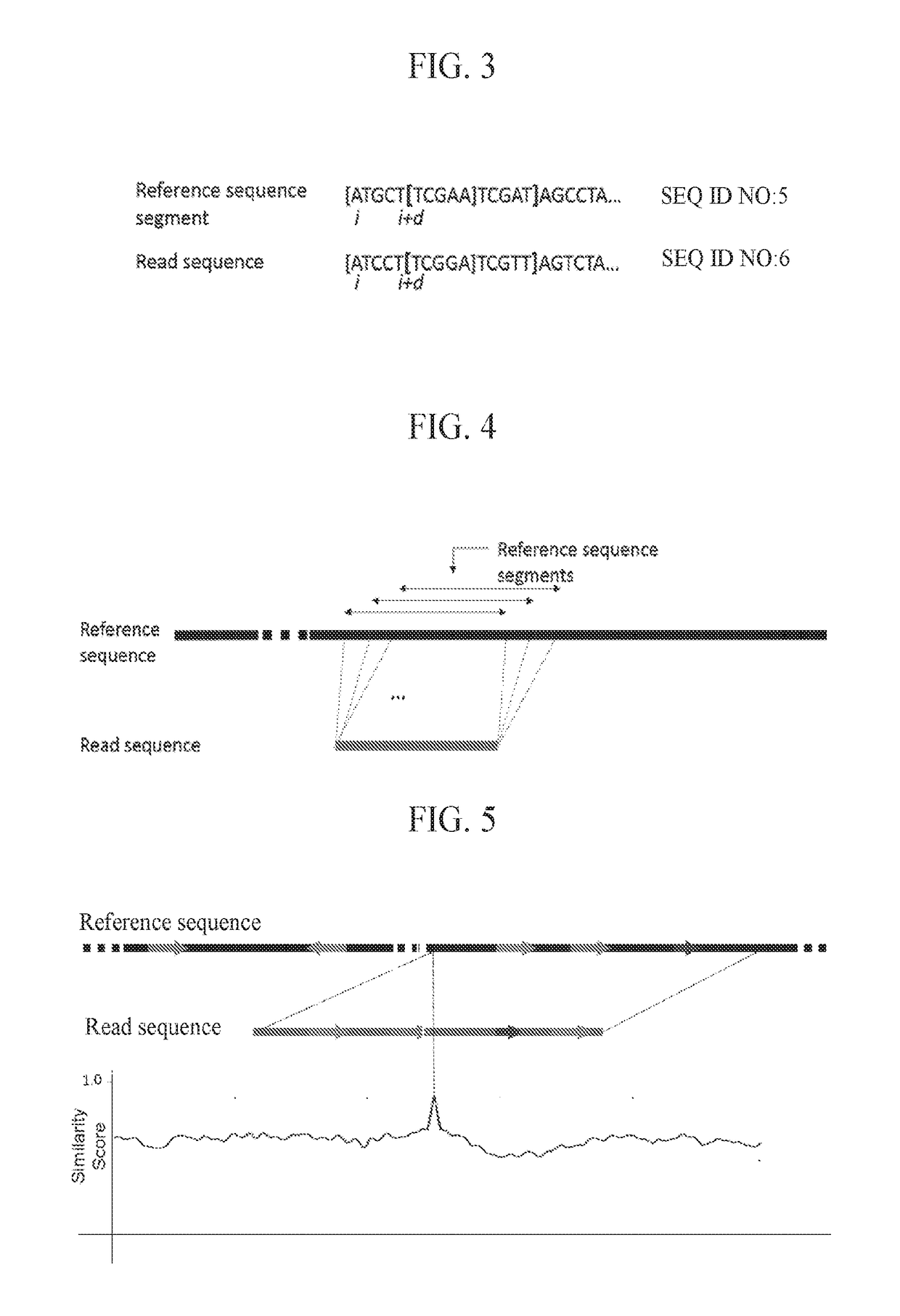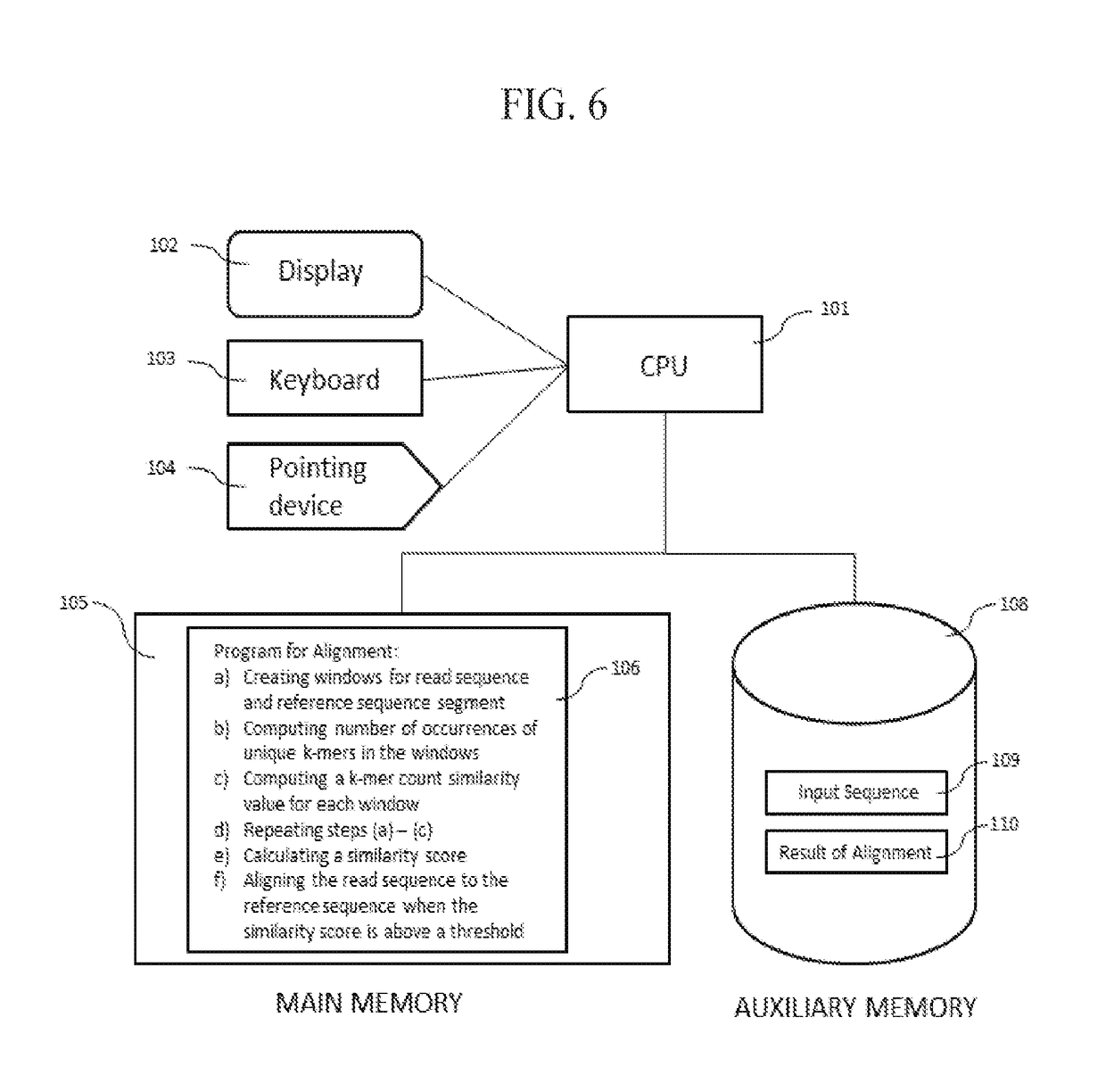Third Generation Sequencing Alignment Algorithm
a sequencing alignment and third generation technology, applied in the field of third generation sequencing alignment algorithm, can solve the problems of higher error rate and longer reads of tgs tools
- Summary
- Abstract
- Description
- Claims
- Application Information
AI Technical Summary
Benefits of technology
Problems solved by technology
Method used
Image
Examples
example 1
[0097]Demonstrating the Effectiveness of the Cosine Similarity Metric Using the E. coli Genome.
[0098]A cosine similarity is a metric used to determine the similarity between two vectors by measuring the cosine of the angle between them. To demonstrate the effectiveness of this metric, 1000 sequences of length 5000 bases each were selected from random locations in the E. coli genome. For each sequence, a cosine distance (1−cosine similarity) was computed between non-overlapping windows of different lengths w=50, 100, 500, 1000, and 5000 bases, and between each window's sequence and its 10 randomly mutated versions with average substitution rates of 15% and 35%. FIGS. 7-8 and 9-10 present the cosine distance distribution for k=3 and k=4, respectively. FIGS. 7-8 and 9-10 illustrate how the distribution of cosine distance between short k-mer count vectors at random positions are distinguishable from their mutated versions. Furthermore, as expected, the distributions overlap becomes sign...
example 2
[0103]Accuracy and Performance Analysis Using E. coli Genome
[0104]Accuracy and performance of this method was evaluated using 20× simulated read datasets from E. coli genome with average length of 5 kbps and 10 kbps and different sequence accuracies of 85%, 75%, 65% and 55%. Read sequences were simulated using PBSIM (Ono et al., 2013) with option (--data-type CLR --depth 20 --model_qc model_qc_clr --accuracy-min 0.5 --length-mean [5000110000]--length-sd 2000 --accuracy-mean [0.85|0.75|0.65|0.55]--accuracy-sd 0.02).
[0105]The performance is reported for k=3, 4 with default settings of (w=500, Lt=7500, f=2, g=1, max-num-top-peaks=10, max-fft-block-size=32768 in Tables 1 and 2 for datasets of average sequence length of 5 kbps and 10 kbps, respectively. k=4 has almost perfect accuracy even in case of ˜45% error rate. As expected from Table 2, longer reads resulted in overall higher alignment rate specially in locating the reads that cover long repeat regions. Reads are tagged as skipped ...
PUM
 Login to View More
Login to View More Abstract
Description
Claims
Application Information
 Login to View More
Login to View More - R&D
- Intellectual Property
- Life Sciences
- Materials
- Tech Scout
- Unparalleled Data Quality
- Higher Quality Content
- 60% Fewer Hallucinations
Browse by: Latest US Patents, China's latest patents, Technical Efficacy Thesaurus, Application Domain, Technology Topic, Popular Technical Reports.
© 2025 PatSnap. All rights reserved.Legal|Privacy policy|Modern Slavery Act Transparency Statement|Sitemap|About US| Contact US: help@patsnap.com



